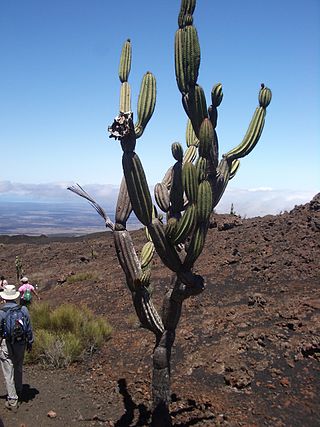
Jasminocereus is a genus of cacti with only one species, Jasminocereus thouarsii, endemic to the Galápagos Islands, territorially a part of Ecuador. In English it is often called the candelabra cactus. At maturity it has a branched, treelike habit, and may be up to 7 m (23 ft) tall. The stems are made up of individual sections with constrictions between them. Its creamy white to greenish flowers open at night and are followed by greenish to reddish fruits.

The lava cactus is a species of cactus, Brachycereus nesioticus, the sole species of the genus Brachycereus. The plant is a colonizer of lava fields – hence its common name – where it forms spiny clumps up to 60 cm (24 in) tall. Its solitary white or yellowish white flowers open in the daytime. It is endemic to the Galápagos Islands.
Aiphanes chiribogensis is a species of palm which is endemic to western Ecuador. Its natural habitats are subtropical or tropical moist lowland forests and subtropical or tropical moist montane forests. It is threatened by habitat loss.

Ferocactus glaucescens, the glaucous barrel cactus, is a species of flowering plant in the family Cactaceae, native endemic to México.

Pachycereus pecten-aboriginum is a columnar cactus plant native to Mexico. They can grow up to 15 m (49 ft) high. The trunk of this species is 1.2 to 5.0 m tall and the fruits are large and burr-like. The specific name, pecten-aboriginum, is from the Latin, and means "native combs". It was inspired by the use of the fruits as hair combs.

Leucostele terscheckii, commonly known as the cardon grande cactus or Argentine saguaro, is a large cactus native to South America and popular in cultivation.

Cereus jamacaru, known as mandacaru or cardeiro, is a cactus native to central and eastern Brazil. It often grows up to 6 metres high.
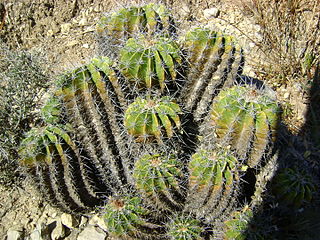
Ferocactus flavovirens is a species of Ferocactus from Mexico.

Armatocereus cartwrightianus is a species of Armatocereus from Ecuador and Peru.
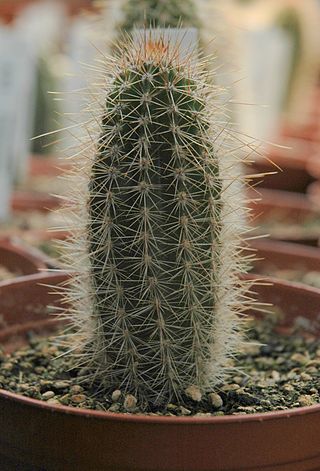
Armatocereus godingianus is a species of Armatocereus from Ecuador and Peru.
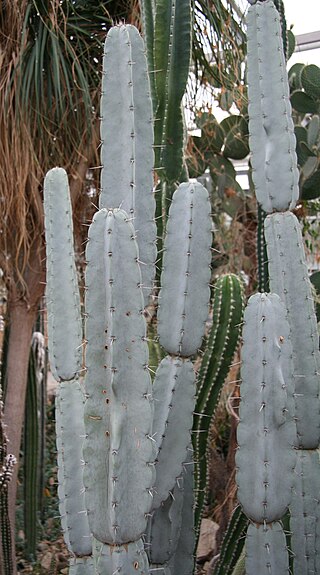
Armatocereus laetus is a species of Armatocereus from Peru.

Haageocereus bylesianus is a critically endangered species of Haageocereus from Peru.

Polaskia chichipe is a succulent cactus native to a small area of mountains of northern Oaxaca and southern Puebla, Mexico. It grows in xerophytic shrubland between 1,600 and 2,300 meters above sea level.

Melocactus neryi is a species of flowering plant from the genus Melocactus.

Neoraimondia arequipensis, synonym Neoraimondia macrostibas, is a tree-like cactus native to western Peru. It was first described in 1835 as Cereus arequipensis.

Armatocereus procerus is a species of Armatocereus found in southern Peru.

Matucana aureiflora is a species of Matucana found in Peru.
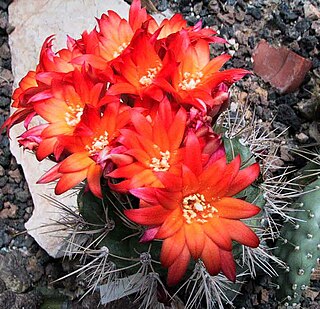
Matucana oreodoxa is a species of Matucana found in Peru.
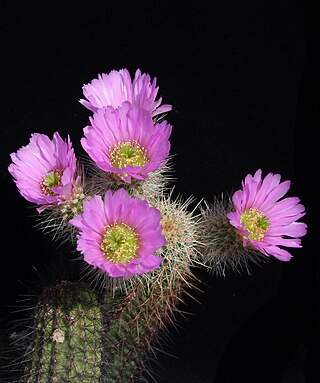
Echinocereus spinigemmatus is a species of cactus native to Mexico.
Matucana klopfensteinii is a species of Matucana found in Peru.



















